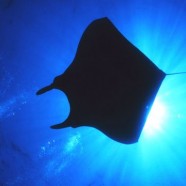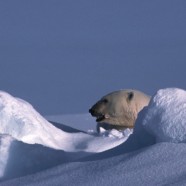The Capitalism of Extinction
Convention on International Trade in Endangered Species of Wild Fauna and Flora
CITES 2013 – Bangkok, 6 pm (local time)
Press Release No. 7
Making money from the extinction of species could become an industry of the future. It has certainly been developed by CITES – Convention on International Trade in Endangered Species of Wild Fauna and Flora.
Looking at the re-opening of international ivory trade, CITES has published à call of tender for an “independent study”. It has been attributed to specialized consultants from southern Africa. Among the 5 authors, Rowan Martin, director of research on wild fauna in Zimbawe, and Debbie A. Peake, one of the best taxidermists of Botswana, are also present. The main recommendation of the study co-financed by the European Union is to create CISO (Central Ivory Selling Organization), a single office for ivory sales. CISO would be modeled after the Diamond Trading Company (DTC), this De Beers Company has lasted over 100 years. One director, named by the main producing states, regulates trade to recognized and accredited governments or private processing companies. Short routes reduce the risks of mixing in illegal ivory. Inter-African sales would be prohibited. The report proposes that it would be possible to collect 8 tons of ivory each year for every 10,000 elephants killed by slaughter, hunting, or natural causes. The authors highlight that this management of ivory would be possible only in the absence of civil disorder and arms conflicts in producing countries. Within the report, ivory is an ore distanced from all biological, ethical and cultural considerations.
The sharks fight back
Convention on International Trade in Endangered Species of Wild Fauna and Flora
CITES 2013 – Bangkok, 17:00 (local time)
Press Release No. 5
Of the 35,000 plant and animal species listed in the CITES* Appendices, only 15 fish will appear in Appendix I and 81 in Appendix II. Fisheries are strategic and political. They must feed humanity while also considering the oceanic territorial claims. Unfortunately, the bluefin tuna has disappeared from all monitors in Bangkok. By contrast, sharks are fighting back with force, accompanied by manta rays.
CITES : Vote blank !
Convention on International Trade in Endangered Species of Wild Fauna and Flora
CITES 2013 – Bangkok, 7.00 pm (local time)
Press release # 6
The United States, Russia, and the European Union take plenary session this week for the 16th CITES assembly. “A joint proposition for polar bears!” such is Robin des Bois’ message for Bangkok.
This new, last resort proposal could ban international polar bear trade concerning eight declining subpopulations. It would be less restrictive than the Appendix-I ban on international trade for all polar bears, and would therefore be more likely to collect more votes than the initial proposal by the United States. The decline of some subpopulations is recognized by all, including Canada. In 1991, Canada regarded the fate of polar bears as something which raised serious concerns. Polar bears in the western part of the Hudson Bay are especially targeted.
The sharks fight back
Convention on International Trade in Endangered Species of Wild Fauna and Flora
CITES 2013 – Bangkok, 17:00 (local time)
Press Release No. 5
Of the 35,000 plant and animal species listed in the CITES* Appendices, only 15 fish will appear in Appendix I and 81 in Appendix II. Fisheries are strategic and political. They must feed humanity while also considering the oceanic territorial claims. Unfortunately, the bluefin tuna has disappeared from all monitors in Bangkok. By contrast, sharks are fighting back with force, accompanied by manta rays.
“Le Beau Mâle,” the perfume that kills
An advertisement for John Paul Gaultier’s new perfume portrays a handsome man with the remains of a polar bear.
Polar bears are at risk of extinction. Hunting is specifically aimed at males. Polar bears are also threatened by the chemical contamination of the Arctic, noise pollution, food scarcity and climatic disturbances.
Of course the authenticity of these polar bear parts for advertising purposes is not guaranteed. But this image encourages a belief in the virtues of charm and virility associated with animal trophies. As CITES – the Convention on International Trade in Endangered Species of Wild Fauna and Flora – has just refused the proposal to transfer polar bears into Appendix I (1), this advertising is poorly timed.
Embargo on the Sirens
Convention on International Trade in Endangered Species of Wild Fauna and Flora
CITES 2013 – Bangkok, 4.45 pm (local time)
Press Release n°4
Caribbean and Amazonian manatees have been listed under Appendix I of CITES since 1975.
It took 38 years for the West African manatee (Trichechus senegalensis) to get the same protection. The proposal from Senegal, Benin, and Sierra Leone was approved by consensus. Today, the population of West African manatees is estimated to be less than 10,000 individuals living in the estuaries and costal waters of 21 countries. Reaching up to 3m in length and between 300 and 500 kg, manatees, also known as sea cows, are exclusively herbivores. Some grand individuals can even reach up to 4m in length and weigh over 1,000kg. Consuming 30kg of aquatic plants each day, they are considered the best biological means of combatting the colonization of invasive species, such as the water hyacinth.
Embargo on the Sirens
Convention on International Trade in Endangered Species of Wild Fauna and Flora
CITES 2013 – Bangkok, 4.45 pm (local time)
Press Release n°4
Caribbean and Amazonian manatees have been listed under Appendix I of CITES since 1975.
It took 38 years for the West African manatee (Trichechus senegalensis) to get the same protection. The proposal from Senegal, Benin, and Sierra Leone was approved by consensus. Today, the population of West African manatees is estimated to be less than 10,000 individuals living in the estuaries and costal waters of 21 countries. Reaching up to 3m in length and between 300 and 500 kg, manatees, also known as sea cows, are exclusively herbivores. Some grand individuals can even reach up to 4m in length and weigh over 1,000kg. Consuming 30kg of aquatic plants each day, they are considered the best biological means of combatting the colonization of invasive species, such as the water hyacinth.
International Trade of Polar Bears to Continue
Convention on International Trade in Endangered Species of Wild Fauna and Flora
CITES 2013 – Bangkok, 12h50 (local time)
Press Release No. 3
The international community, inadequate in stopping the melting of the ice caps, is equally inadequate in protecting polar bears from international trade. The U.S. proposal to add polar bears to Appendix I of CITES was voted down yesterday with only 38 votes for, 42 against, and 46 abstentions (2/3 of the vote were necessary).
The agreement between the U.S. and Russia was not enough. The 27 members of the European Union abstained; they are well situated among the 70 countries that import polar bear hides and skulls each year.













